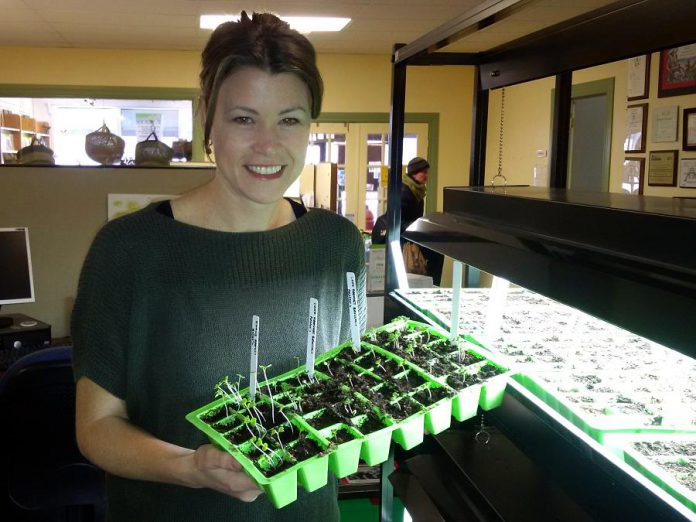
As the winter drags on, a lot of us are eager to be outdoors and in the garden. While it’s far too early to start most vegetable plants indoors, one task you can do to chase away the winter blues is test seeds for germination.
Testing is a great way to determine the rate of germination of seeds saved from the last growing season, or that of leftovers. Testing can also eliminate lost time in the short growing season, if you know in advance that the seeds you have stored will sprout.
Germination testing easy, and there are only a few simple three steps to the process:
- Moisten a paper towel and evenly place your seeds on it. Roll up the paper towel and place it inside a plastic bag.
- Leave the bag in a warm location for two to five days — enough time for the seeds to germinate.
- After the allowable time check for germination, if the seeds have sprouted, chances are they will be okay to plant when the time is right. Seeds which haven’t sprouted should be discarded — they won’t fare any better in the ground.
The number of seeds that you see sprouting in the towel will give you a good idea how well that seed will do in the garden. Keep in mind that if only half the seed sprouted in the towel, you can expect similar results when planted in the ground and you can adjust the amount of seed you use at planting time accordingly.
A factor that can influence germination rates is the age of the seed. Depending on the type, some seeds will last up to three years, while others are only good for one. Examples of seeds that generally only can be stored for a year include sweet corn, parsnips, Swiss chard, and spinach. Seeds that are okay to store on a longer term include beans, carrots, squashes, tomatoes, and turnips.
After you’ve tested your seeds for germination, think back to last year to help with your planting decisions for the growing season ahead. What grew well? What did you have too much or too little of? What types of vegetables do you enjoy eating? These are all-important questions to think about.
Many of us preserve vegetables to eat during the winter months. Are there vegetables that you use more of over the winter, like tomatoes? Now is the time to take stock of what you want to preserve and put a plan into place for the coming growing season to have more of these types of vegetables on hand.
If you’re undertaking a vegetable garden for the first time and starting seeds indoors in the coming weeks, having an idea of how many plants you want to grow needs to be taken into consideration.
If you’re just starting out, think small quantities. Don’t plant big numbers of a single variety of vegetable, unless you have a solid plan of how you’re going to use them.
Since we’re still many weeks away from the time shovels can go into the ground, now is also a good time for those who don’t currently have a garden plot to start planning for the spring.
There are several considerations that need to be taken during the garden planning process:
- Placement of your garden is very important. Think about the types and placement of trees on your property. Avoid locating a garden near trees, as they will steal nutrients from the soil and shade it.
- The correct amount of sun exposure is also very important. If you have a general idea of the types of vegetables you want to grow, check your seed packages to determine the amount of sunlight required. Vegetables love the sun, requiring a minimum of four hours and some up to eight hours of direct sunlight every day. Generally, the more sun exposure, the better.
- Another consideration to think about is how dry or wet the ground is around your home. If you know that water accumulates in specific areas, it’s probably not a good idea to locate a garden plot in those locations. The same goes for sections of your yard on the opposite, dry end of the spectrum.
- Apart from sunlight, having good soil is crucial to growing a successful garden. If the soil in your backyard isn’t as good as it could be, don’t be alarmed. Most soil can be enriched with compost and be fine for planting. Generally, vegetables require good, loamy, well-drained soil.
If you’re in need of seeds, keep in mind that Seedy Sunday is coming up on March 1st at George St. United Church, from 1 to 5 p.m. The free event is a great opportunity to purchase or swap seeds with fellow garden enthusiasts. For more information, visit urbantomato.ca/learn/seedy-sunday-peterborough.


























